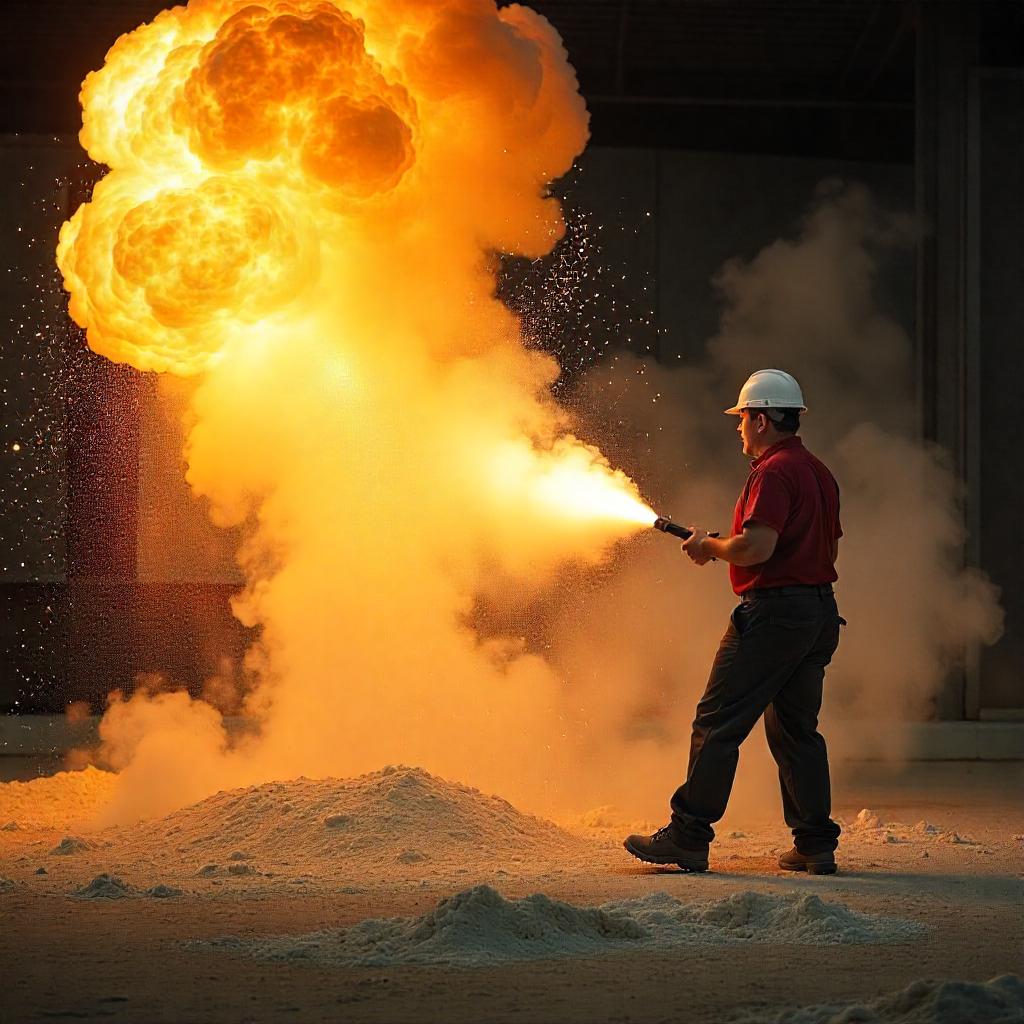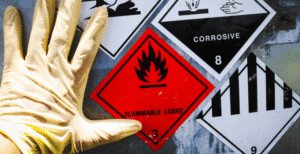Flour Dust Explosions
Flour dust explosions are serious events that can happen in industries like milling and baking. Flour is a common item found in homes, but in factories, the dust from flour can create big dangers. When flour dust spreads in the air, it can catch fire and cause explosions.
- Flour dust is very fine and can easily mix with air.
- When enough dust gathers, it can ignite.
- The explosion can cause damage to buildings and hurt people.
- Industries must follow strict rules to keep workers safe.
Understanding flour dust explosions helps everyone in the baking and milling industries stay aware of the risks and take steps to prevent them.
Why Does Flour Explode?
Flour can explode because of its particles. Flour is mostly made of starch, which is a type of carbohydrate. Starch is very flammable. When flour particles are in the air, they can catch fire quickly if they meet an ignition source, like a flame or a spark. This can cause a rapid explosion.
When flour is in a fine powder form, it has a large surface area. A larger surface area means there is more space for the flour to react with oxygen. This reaction is called oxidation. The more flour particles there are in the air, the faster the reaction can happen.
Several factors contribute to flour’s explosiveness:
- Particle Size: Fine flour particles are more likely to explode than larger ones. Smaller particles stay in the air longer and can mix with oxygen easily.
- Suspension in Air: When flour is airborne, it can create a dust cloud. This dust cloud is highly flammable and can lead to an explosion.
- Ignition Source: If there is a flame, spark, or heat source nearby, it can ignite the flour dust. This can happen quickly and without warning.
- Concentration: A high concentration of flour dust in the air increases the risk of explosion. More particles mean more chances for a reaction to happen.
Understanding these factors helps people work safely with flour in kitchens and factories.
Is Flour Dust Explosive?
Flour dust is indeed explosive under certain conditions. When flour dust gets into the air, it can create a dangerous mixture. The size of the flour particles, how much dust is in the air, and whether there is something to ignite it can all affect the explosion risk. Just 1-2 grams of flour dust per cubic foot of air can be enough to cause an explosion.
- Particle Size: Smaller flour particles are more likely to become airborne and create an explosive mixture.
- Concentration in the Air: The amount of flour dust in the air must be high enough. 1-2 grams per cubic foot is critical.
- Ignition Source: There needs to be something to ignite the dust, like a spark or flame.
Historical Incidents of Flour Dust Explosions
Historical incidents of flour dust explosions show how dangerous flour dust can be. One of the most notable incidents happened in 1878. The Washburn ‘A’ Mill in Minneapolis was a huge mill at that time. This explosion killed 18 people and destroyed the mill completely.
The cause of the Washburn ‘A’ Mill explosion was a buildup of flour dust. Flour dust is very fine and can easily catch fire. When it ignited, it caused a massive explosion that shook the area. This incident highlighted how important it is to have safety measures in place in mills.
Key details about the Washburn ‘A’ Mill explosion:
- Year: 1878
- Location: Minneapolis
- Fatalities: 18 people
- Impact: The largest mill of its time was destroyed.
Another significant incident occurred in 1928 in New York. The explosion took place at the General Mills plant. It caused severe damage and took several lives. The explosion happened due to a similar reason: flour dust igniting in the air.
Key details about the General Mills plant explosion:
- Year: 1928
- Location: New York
- Fatalities: Uncertain, but many injuries were reported.
- Impact: Severe damage to the plant.
These incidents remind everyone of the risks involved with flour dust. Proper safety measures can help prevent such tragedies. It is crucial to keep work areas clean and reduce dust buildup. Regular inspections and training can also make a big difference in safety.
Preventing Flour Dust Explosions
Preventing flour dust explosions is very important in factories that handle flour. Flour dust can be very flammable and can cause serious accidents. Here are some strategies to help prevent these explosions:
- Keep areas clean. Regularly clean floors and equipment to remove flour dust. This helps reduce the amount of dust in the air.
- Use proper ventilation. Good airflow helps keep dust from building up. Install exhaust systems to remove dust quickly.
- Control sources of ignition. Do not allow open flames or sparks near flour dust. Use equipment that does not create sparks.
- Monitor dust levels. Use sensors to check how much dust is in the air. This helps to know if it is getting too high.
- Train workers. Educate employees about the risks of flour dust and how to work safely. Make sure they know what to do in case of an emergency.
- Keep equipment in good shape. Regular maintenance on machines helps prevent dust from escaping and causing problems.
- Use dust suppression systems. These systems can help reduce the amount of dust created during processing.
- Store flour properly. Use sealed containers to keep flour safe and reduce dust exposure.
By following these steps, factories can help prevent flour dust explosions and keep workers safe.
Role of Intensiv Filter Himenviro in Industrial Dust Control
Intensiv Filter Himenviro is a global leader in industrial filtration solutions. They have a lot of experience in creating custom solutions that help keep the air clean. Their products make sure companies follow environmental rules. This is very important because it helps reduce the risks linked to flour dust explosions. By using their advanced filters, industries can control dust better and create a safer work environment. Intensiv Filter Himenviro focuses on quality and innovation, ensuring that their clients meet safety standards while improving air quality.
Conclusion
Understanding the explosive nature of flour dust is very important. Flour dust can catch fire and cause serious accidents. This is why it is crucial to have strong prevention strategies. Industry leaders, like Intensiv Filter Himenviro, provide advanced filtration solutions. These solutions help keep workplaces safe and meet safety rules.
Key points to remember include:
- Flour dust can be dangerous and explosive.
- Effective prevention strategies are key to safety.
- Companies like Intensiv Filter Himenviro offer important filtration systems.
- Safety and compliance in industrial environments are vital.
Actionable steps to consider:
- Regularly check for flour dust buildup in work areas.
- Use proper filtration systems to remove dust.
- Train employees on the dangers of flour dust.
- Follow safety guidelines to prevent dust explosions.



